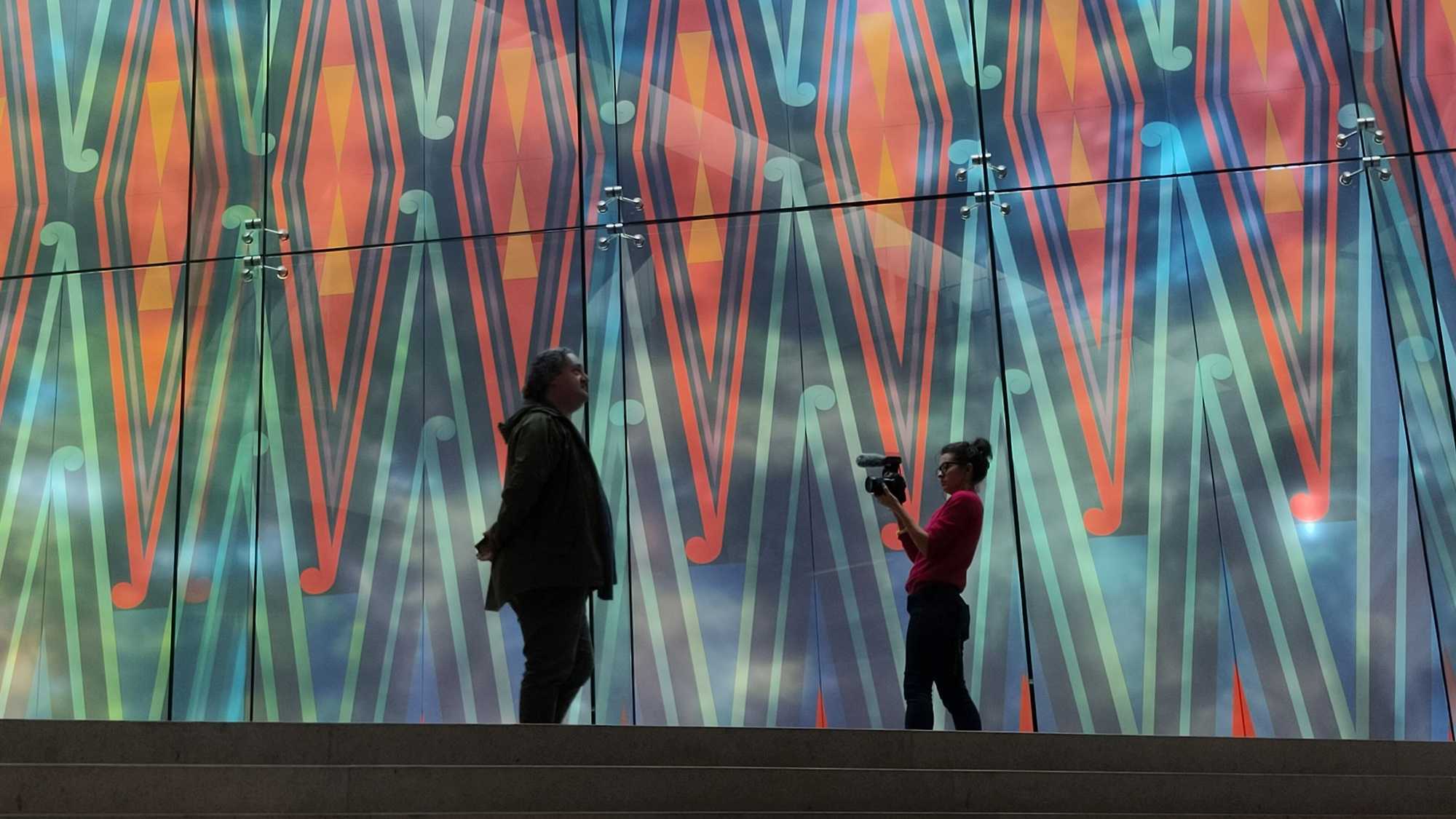Unprecedented insight into the curation of the Toi Tū Toi Ora: Contemporary Māori Art exhibition reveals the struggle for Māori artistic sovereignty within the structures of Aotearoa New Zealand’s cultural institutions.

That’s not up for grabs, that is ours to own, and if it’s not then I don’t want to be part of that conversation.
TOITŪ Visual Sovereignty 2025
Toi Tū Toi Ora: Contemporary Māori Art was the largest Māori exhibition in the history of Auckland Art Gallery and attracted attendance levels not seen by the gallery since 1989. But its triumph masked a deeper tension.
Chelsea Winstanley’s documentary follows the journey of curator Nigel Borell as he navigates the constraints between institutional authority and Māori self-determination. Borell’s curatorial vision is clear – Māori art must be authored, not simply advocated for. For the artists, this represents a chance to be seen on their own terms, and is an initiative that ultimately leads some to the global stage of the Venice Biennale.
But as the scale of the exhibition grows, so does the institutional resistance. The result is a reckoning: whose story is being told, and who holds the pen? With many of the artworks exploring the legacy of colonialism, the making of the exhibition itself becomes a living reflection of that very struggle. Laying bare behind-the-scenes conversations rarely seen on screen, TOITŪ Visual Sovereignty lifts the curtain on the inner workings of an institution and examines the cost of visibility without control – and the quiet power of walking away. — Heperi Mita